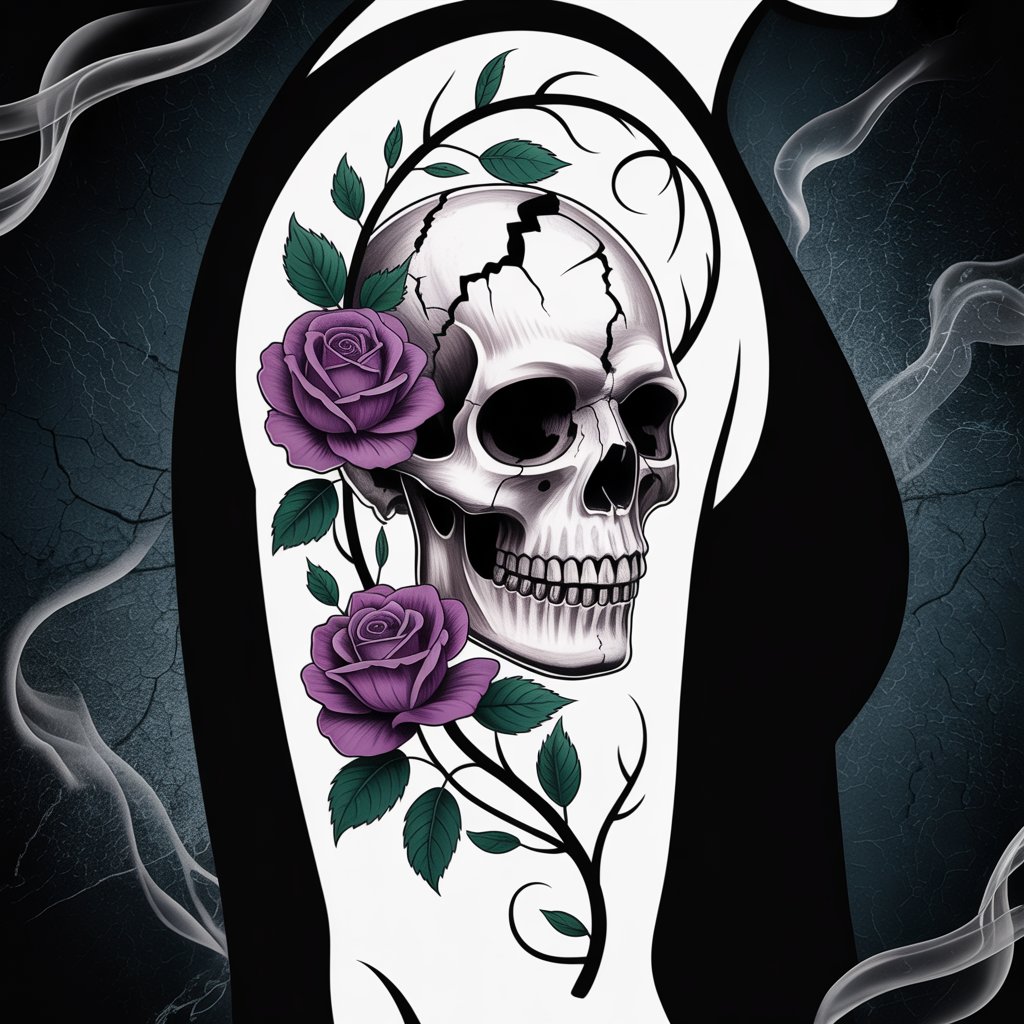In the diverse landscape of tattoo artistry, few designs carry the symbolic weight and aesthetic impact of the skull and rose combination. This classic pairing has transcended trends to become a timeless emblem in body art, evolving in style while maintaining its powerful core symbolism.
The Duality of Life and Death
The skull and rose tattoo perfectly embodies the concept of duality—life’s beauty and fragility represented by delicate roses juxtaposed against the stark reminder of mortality in the form of a skull. This visual metaphor speaks to the human experience in profound ways.
“These designs have remained popular because they address universal themes,” explains tattoo historian Dr. Elena Varga. “The contrast between the permanent (death) and the ephemeral (beauty) resonates across cultures and generations.”
In the examples shown, the cracked skull paired with vibrant purple roses creates a striking visual narrative. The cracks in the skull suggest transformation or rebirth, while the lush roses represent life’s persistent beauty even in the face of mortality.
Evolution in Artistic Execution
Modern interpretations of this classic motif have elevated the technical execution to new heights. Contemporary artists employ refined techniques to create:
- Hyperrealistic details in the skull’s structure, including subtle shadowing and precise anatomical features
- Vibrant color palettes that break from traditional red roses, with purple tones creating a mystical, ethereal quality
- Thoughtful composition that integrates the elements in harmonious, flowing designs
- Complementary elements like teal-green leaves that provide color balance and symbolize growth
The examples display masterful linework and shading, creating a three-dimensional quality that makes the design appear to rise from the skin.

Personal Significance in Modern Context
Today’s wearers often choose this traditional imagery for deeply personal reasons that go beyond aesthetic appeal.
“My skull and roses piece represents the loved ones I’ve lost and how their memory continues to blossom in my life,” shares Maya, a tattoo enthusiast who recently received a similar design. “It’s both a memorial and a reminder to appreciate life’s beauty.”
Others find empowerment in confronting mortality through art. The design serves as a daily reminder of life’s impermanence and the importance of living authentically.
Technical Considerations for Artists
Creating effective skull and rose compositions requires specific technical skills:
- Balance of detail: The skull demands anatomical precision while roses require a more organic, flowing approach
- Strategic color application: Limited color palettes with maximum impact
- Placement considerations: The design must follow the body’s natural contours
- Negative space utilization: Allowing elements to breathe within the composition
The most successful pieces, like those pictured, demonstrate a harmonious integration of these technical elements.
A Timeless Choice in an Ever-Changing Art Form
While tattoo trends come and go, the skull and rose motif continues to captivate both artists and clients. Its visual impact, rich symbolism, and adaptability to various artistic styles ensure its place in the pantheon of classic tattoo imagery.
Whether rendered in traditional American, neo-traditional, or illustrative styles, this powerful combination continues to evolve while honoring its historical roots in tattoo culture.
For those considering this enduring design, it offers both striking visual appeal and meaningful symbolism—a rare combination that explains its continued popularity in contemporary body art.


